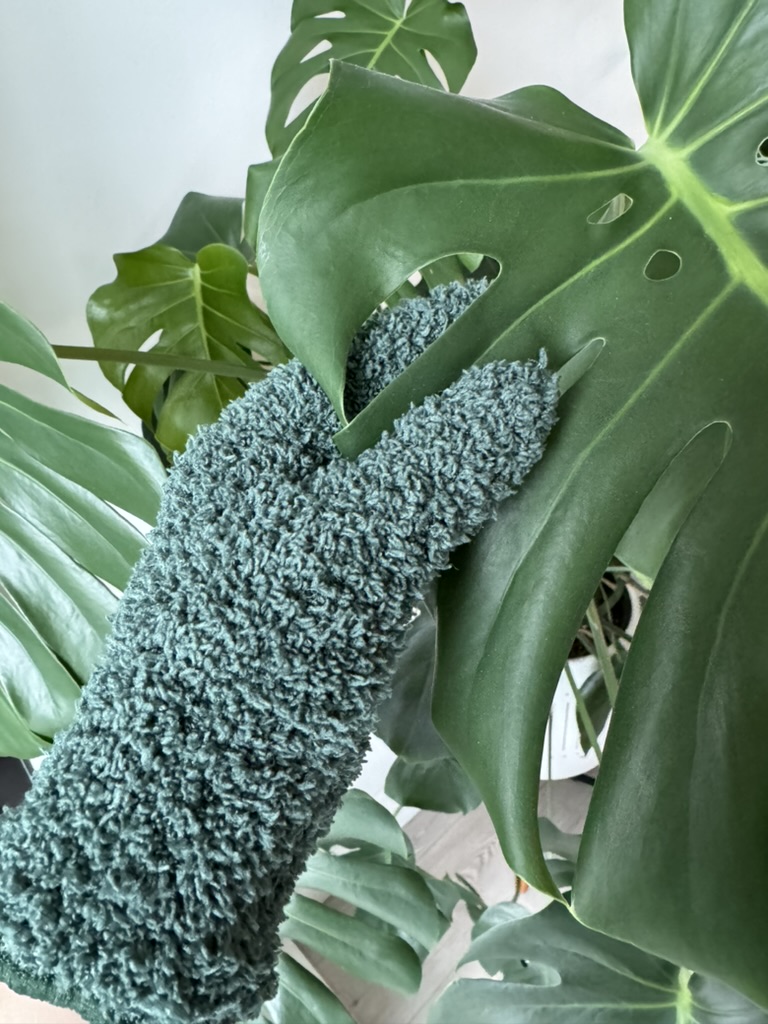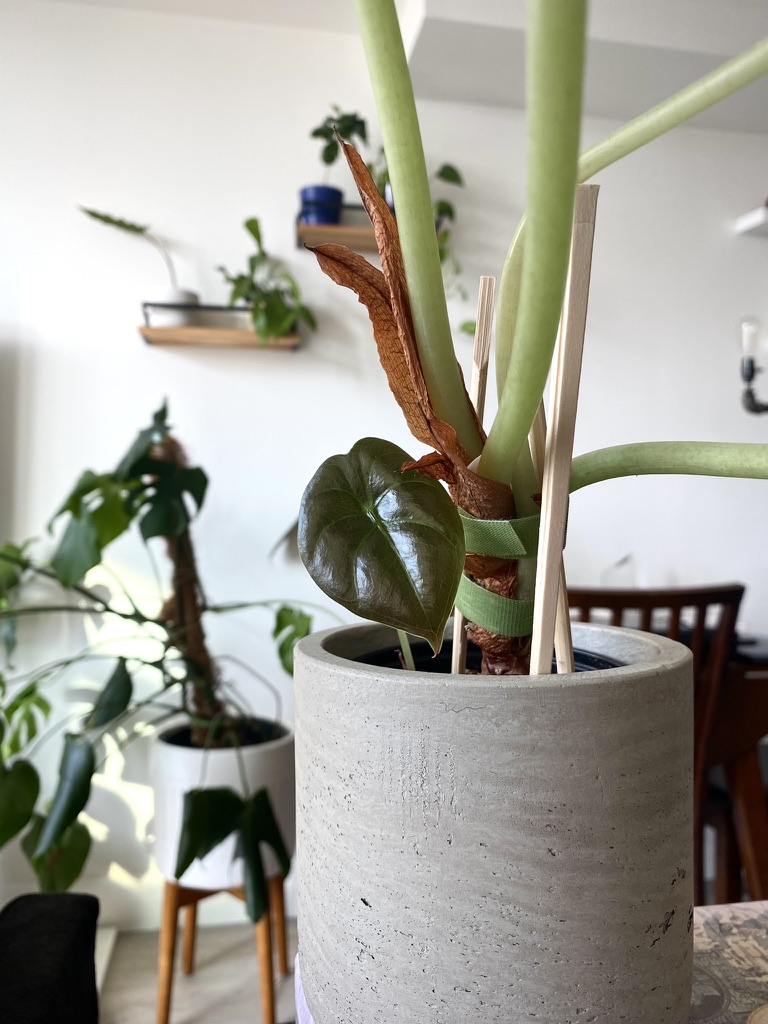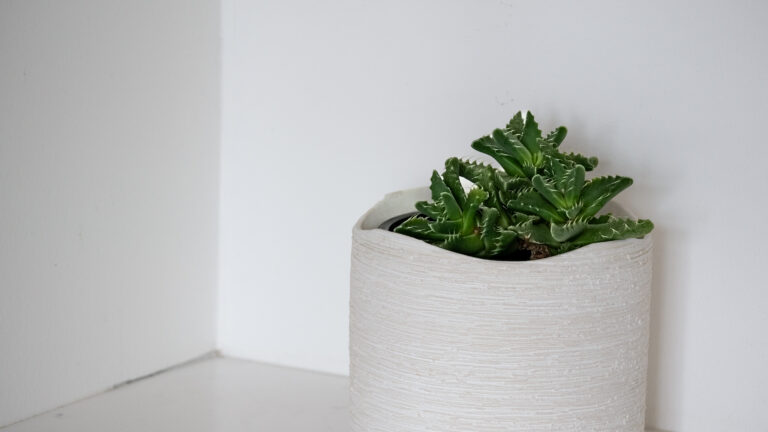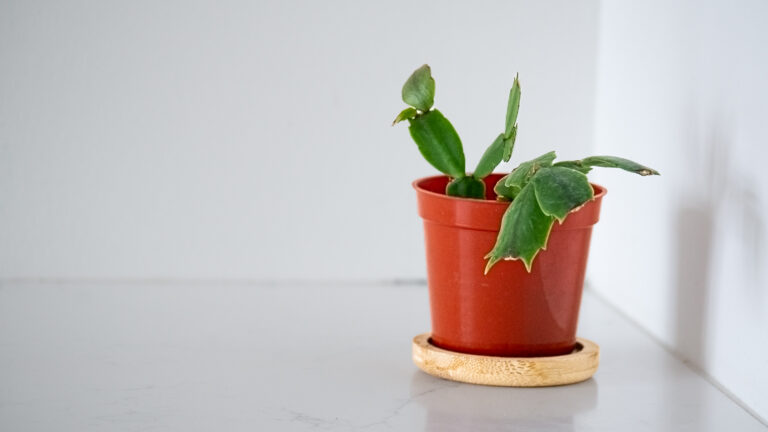Jade Coral or Crassula Ovata ‘Gollum‘ is a member of the crassulaceae family. It is native to South Africa and Mozambique.
Crassula Ovata ‘Gollum’ is referred to as the Jade Coral plant because due to its resemblance to coral.
This plant is also referred to as Gollum Jade because the leaves resemble Gollum’s fingers from Lord of the Rings.
There are around 300 species of the Crassula family.
🪴 Appearance of Jade Coral
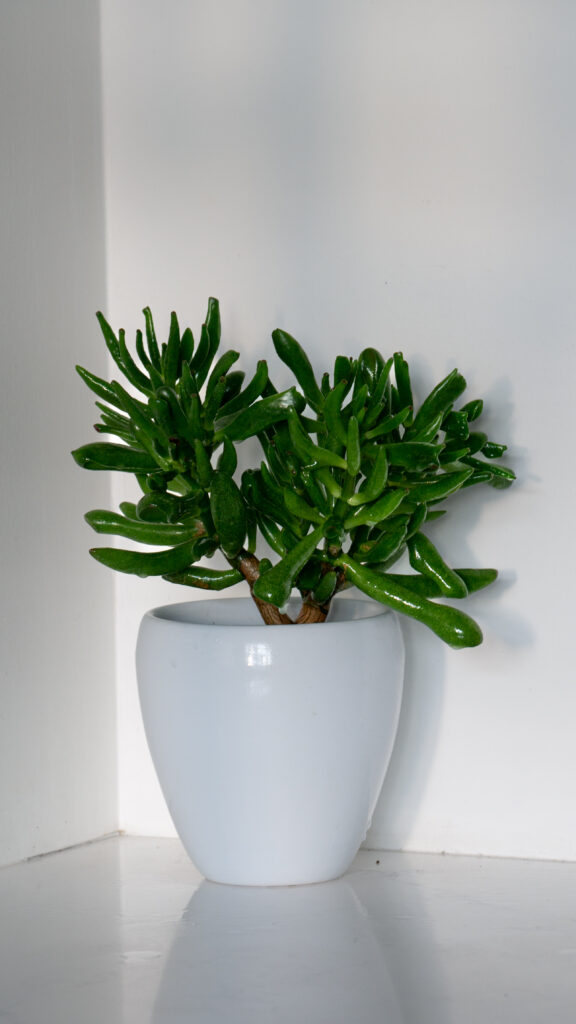
The Jade Coral has a woody stem with green, tubular leaves with reddish tips that resembles small trumpets, elongated fingers (some say they look like Gollum’s in Lord of the Rings), or coral.
It grows in a compact, bushy form.
☀️ What Light Does Jade Coral Need?
Jade Coral thrives in bright light. They prefer 4-6 hours of sun in the morning or late afternoon. They like east- or west-facing windows.
🌡️ What Temperature and Humidity do Jade Coral Like?🌫️
Jade Coral prefers a temperature between 15-24 degrees celsius (59-75 degrees Fahrenheit), but can tolerate 10 celsius during the winter. They do well in any humidity so they are happy in average household humidity levels (40-60%). It doesn’t need to be close to your humidifier.
I keep my Jadel Coral closer to the window and away from the humidifier. I use my humidifier to ensure the humidity levels in my apartment stays between 40% and 60%. Since I live in Canada and the winters can be very dry, and the humidity can drop below 30%, so its helpful to set the humidity at about 45% or 50% in this season.
🌱 How Does Jade Coral Grow?
On average, Jade Coral can grow up to 2-3 feet tall indoors.
New foliage grows from the branches of the Jade Coral in a bushy, compact form.
🪴 Repotting Jade Coral
To learn how to repot Jade Coral, watch the video below.
- Remove Jade Coral from planter
- Detangle roots
- Add soil with lots of drainage to a pot with a drainage hole
- Add Jade Coral into pot
- Add additional soil until roots are covered and plant appears supported
- Water Jade Coral
🌸 Does the Jade Coral Bloom?
Yes, this plant can flower. Typically this doesn’t happen until the plant is at least three years old.
✂️ How to Propagate Jade Coral?
The easiest way to start a new Jade Coral is by twisting off a healthy leaf.
Wait for the callus to form on the separated leaf. This should take a couple of days. Once the callus is formed, you can pot it into a well-draining potting mix, in a well lit spot. Make sure you lightly water the plant.
You can also use rooting hormone on the leaf before putting it in the soil if you prefer.
Patience is key with propagation. Give your new plant time to settle into its environment. It will take between 2-6 weeks. You can gently tug on the cutting and if there is a bit of resistance, good chance roots have formed.
💧 How Much Water Does the Crassula Ovata Gollum Need?
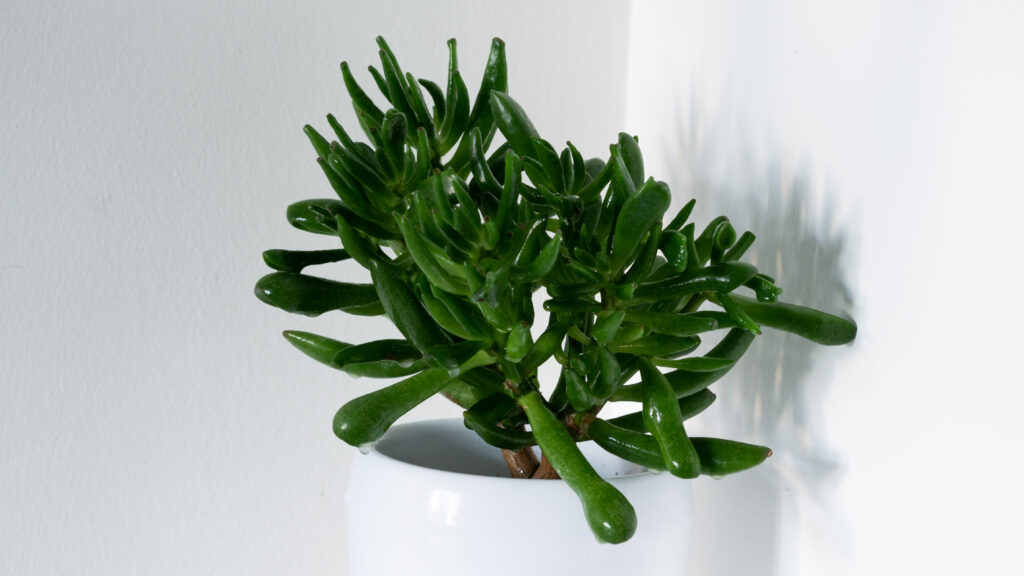
The Jade Coral likes to dry out between waterings. To determine if your plant needs water, you can stick your finger in the soil (1 to 2 inches) and if it is dry, its ready for water!
If you don’t want to get your hands dirty, you can try a moisture meter (I personally have not used one, but I know quite a few people who do, and this one is really highly rated on Amazon).
Jade Coral typically need to be watered every 2-4 weeks (depending on your environment).
I typically bottom water this plant through the drainage hole of the pot on a tray. It’s the easiest way to know if your plant is thirsty or not. Overwatering can lead to fungus gnats, root rot, or the death of your plant.
You can top water, but it’s best to do so in a pot with drainage until water is flowing out of the hole. If your pot doesn’t have drainage, you might accidentally drown your plant or make some fungus gnats very happy.
You should top water from time to time to make sure any built up minerals can wash through the plant. The water should drip out of the bottom of your drainage hole.
🪳 Pests & Problems 😔
Jade Coral can face the following pests and problems.
🪳 Pests
- Mealy Bugs: these look like little white cotton balls on the Crassula Ovata. You can remove these with your fingers if you catch them early enough, but I would use a cotton swab with a drop of Isopropyl alcohol and try to scrape them off the stem.
- Scale: Scale are small, brownish, round or oval insects that attach themselves to the leaves or stems of plants. They are hard to notice as they appear like a growth or bump on Crassula Ovata. Scale can cause yellowing, wilting, and weakened growth. You can remove scale by removing them with a cotton swab with isopropyl alcohol, using insecticidal soap or neem oil.
- Aphids: Aphids are small, insects that cluster under leaves and stems. They can appear white, brown, black, gray, light green or yellow. If you see distortion, wilting or yellowing leaves, this can be a sign of aphids. You should be able to spray them off of your Crassula Ovata with a strong stream of water or using insecticidal soap.
- Spider Mites: If spider mites have taken to your Crassula Ovata, spray them with a mixture of neem oil, dish soap and water (or you can buy an insecticidal soap). I repeat this about once or twice a week (depending on the severity of infestation) for about a month. It’s also good to do this preventatively once a month or so. You will know you have spider mites if you see webbing and leaf damage. Learn how to eradicate Spider Mites.
- Fungus gnats: Spray the Crassula Ovata with a mixture of neem oil, dish soap and water. I also let the soil dry out and add dryer sheets on top of the soil so the gnats can’t sense the moisture on the soil, and add yellow sticky traps.
😔 Other Common Problems
- Powdery mildew: This can happen in cold, humid conditions that lack good air circulation. You can fix this with a tablespoon of baking soda, half a teaspoon of dish soap, in 3L of water.
- Drooping Leaves or Leaves Shrivelling: Your Crassula Ovata is likely underwatered and thirsty. Just give it a little water and it should be as good as new.
- Underwatering: Even though plants prefer to be underwatered over overwatered, you still have to remember to water your Crassula Ovata on a consistent schedule. Signs of underwatering an include leaves becoming shrivelled, discoloured or dry.
- Overwatering: Root rot happens from overwatering your Crassula Ovata with insufficient drainage. You can improve the drainage of your plant by ensuring your plant is potted in a planter with a drainage hole and using a well draining soil (something with a decent amount of perlite). You can also end up with fungus gnats or fungal disease from overwatering.
☢️ Are Coral Jade Toxic?
Jade Coral is moderately toxic to humans and pets if ingested.
Jade Coral Quick Care Guide
| Scientific Name | Crassula Ovata ‘Gollum’ |
| Nickname | Jade Coral, Coral Jade Plant, Gollum Jade |
| Origins | South Africa and Mozambique |
| Light | Bright light |
| Temperature | 15-24 degrees celsius (preferred), 10 degrees celsius can be tolerate during the winter |
| Humidity | Any |
| Height | Up to 2-3 feet |
| Blooms | Yes |
| Propagate | Stem Cuttings |
| Water Frequency | When dry (likely every 2-4 weeks) |
| Pests | Mealy Bugs, Aphids, Scale, Spider Mites, Fungus gnats |
| Common Problems | Yellowing leaves, root rot, sunburn |
| Toxicity | Moderately toxic (mild irritation if ingested) |
References
Below is a list of external sources I consulted while writing this post. This post is a mixture of my own experiences, and the external sources listed below:
Jomo Studio – Jade Coral
The Spruce – Gollum Jade

